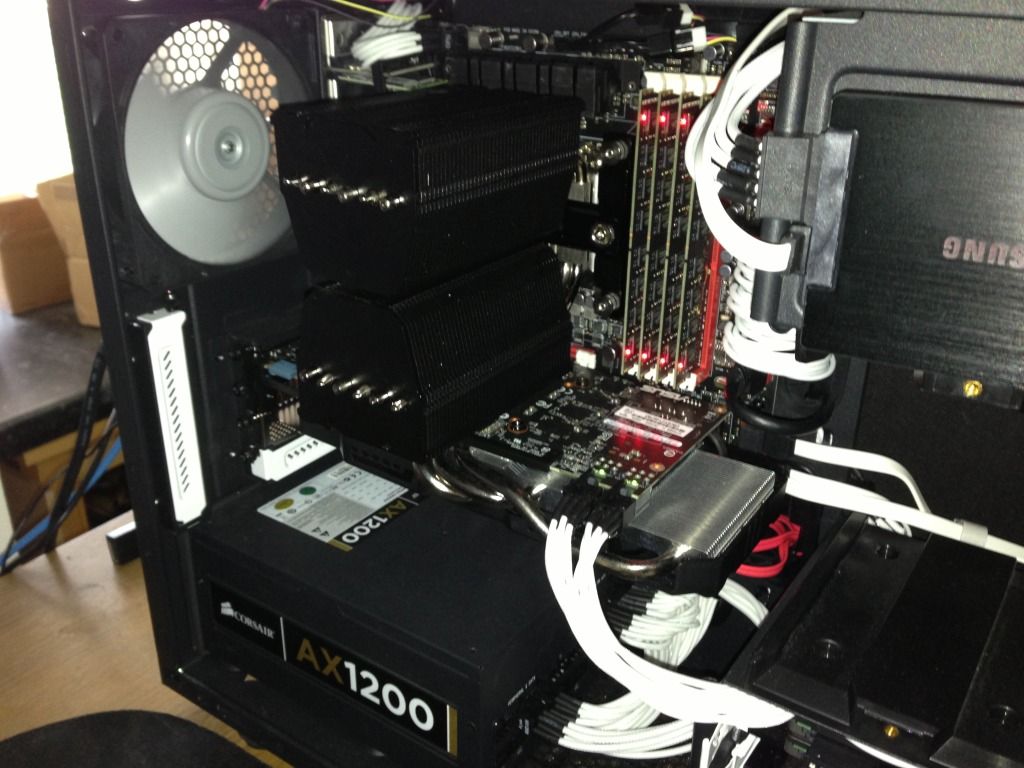Heres a nice guide for de-lidding
Please Read:
Caution
This thread is pinned as a convenience only and does not constitute endorsement by AVSIM. By de-lidding your CPU you WILL void your warranty and could accidentally damage your processor. AVSIM does not recommend any process or equipment alterations that does not adhere to the original equipment manufacturers specifications or operating procedures. If you follow the de-lidding procedure outlined here, you do so at your own risk. Avsim is not liable for any damage.
SpiritFlyer
What's this de-lidding business?
De-lidding is a procedure used by overclockers/modders to remove the Integrated Heat Spreader (IHS) from their CPU. It is best accomplished with a bare razor blade or an exacto knife. It is being performed by overclockers of Ivy Bridge chips (Intel 3xxx line, excluding the 38xx and 39xx chips) and should not/cannot be performed on any other modern Intel chips.
Background/theory:
So Ivy Bridge runs hot when you overclock, specifically when you overvolt. This is due to a manufacturing decision Intel made with Ivy Bridge to use a Thermal Interface Material (TIM) between the CPU die and the IHS, rather than a fluxless solder as has been used traditionally. The TIM Intel chose is of extremely poor quality, as well as being a very thick layer. TIM does not conduct heat as well as metal, nowhere near as well in fact and so a TIM which is of poor quality to begin with, and is slathered on in a very thick layer will produce the ridiculously high temperatures that Ivy Bridge reaches when overclocked unless one performs this modification.
In order to get the most out of a CPU overclock, you have to overvolt, some chips more than others. For example, I have to run a staggering 1.5V on my chip to hit 4.9GHz with a 2.6GHz RAM speed. That is with extremely good water cooling and the best TIM money can buy, (Coollaboratory Liquid Pro) in addition to flat mating surfaces achieved via lapping (sanding down to flat). Lower temperatures means your chip will need lower voltage so in theory a chip at say 0 degrees C operating temperature will require a lower voltage (Vcore) to hit say 5GHz than one running at 80 degrees C.
Necessary equipment:
Razor blade/exacto knife
rubbing alcohol
aftermarket TIM
Time for procedure:
5-15 minutes
Procedure:
Take your razor blade and gently slide it in under the IHS at any corner of the CPU like so:
delid1.jpg 41.02K 39 downloads
You then want to work the blade side-to-side:
delid2.jpg 58.33K 25 downloads
delid3.jpg 53K 25 downloads
Once you have done this you will feel the blade can now be pushed in further, go ahead and do so now using your thumb like this. You can continue pushing until about this point, be careful not to go in too far or you may contact the CPU die and potentially damage it. If you push the blade in and feel resistance, STOP!
delid4.jpg 55.99K 27 downloads
Next you will want to "sweep" along the edges, working the blade in on the sides rather than the corners, using each "cleared" corner as a starting point to sweep the edges. This is what "cleared" corner should look like:
delid5.jpg 52.09K 23 downloads
Repeat this procedure at all 4 corners. Once you are done, clearing the corners and sweeping the sides it may be necessary to further sweep the sides as seen here:
delid6.jpg 47.79K 26 downloads
delid7.jpg 47.46K 26 downloads
When done you will be able to simply lift off the IHS like this:
delid8.jpg 65.63K 30 downloads
The next step is to clean off the thermal paste with some rubbing alcohol and a paper towel. No special instructions here. The next step is to remove the epoxy from the CPU package. You can simply use your fingernail to scrape away the black epoxy all around the edge of the CPU package. This will help to ensure the IHS sits as close to the CPU die as possible and allow us to use the least amount of TIM. When done it will look like this:
delid9.jpg 48.59K 28 downloads
The final step is to apply your choice of TIM. I recommend using a liquid metal TIM such as Coollaboratory Liquid Pro or Liquid Ultra, Phobya Liquid Metal is a good option as well. In my testing, temperature drops by 20-30 degrees C over the stock thermal paste with the use of any liquid metal TIM when applied properly. Note: it may be necessary to apply some liquid metal to the underside of the IHS. You can check this by placing the IHS on the CPU die (simply let it rest, no force required, no need to use any adhesive to re-attach either) and placing the CPU back in the socket on the motherboard. You then use the CPU retention mechanism to hold it in place. Remove the CPU from the socket and the lid from the CPU to check the contact of the TIM. If you don't see a nice even splotch of TIM on the underside of the IHS go ahead and apply a thin layer of TIM to the underside of the IHS and then reinstall the CPU in the socket as described above.
For further temperature reduction one can lap their IHS (top side only!) and heatsink/waterblock base.
Good luck, and happy overclocking!






 so tempted to have a go. One guys thread i have seen uses a build up of gaffa tape either side of the die to minimise crushing of the die.
so tempted to have a go. One guys thread i have seen uses a build up of gaffa tape either side of the die to minimise crushing of the die.
